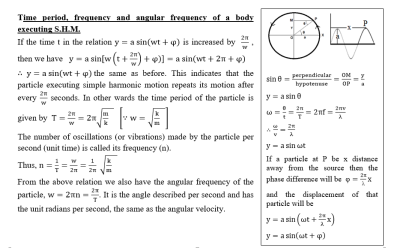Course description
Two-body oscillations:
Many objects on the microscopic level, such as molecules, atoms, nuclei, execute oscillations that are approximately simple harmonic. Let us consider a diatomic molecule, in which the two atoms are bound together with a force and if displaced in a small distance from its equilibrium position, the molecule will oscillate about the equilibrium position (Fig. 3 a,b). Therefore, a molecular vibration occurs when atoms in a molecule are in periodic motion. Let us suppose that the molecule can be represented by two particles of masses m1 and m2 connected by a spring of force constant k, as shown in Fig. 3 (c). The motion of the system can be described in terms of the separate motions of the two particles, which are located relative to the origin O by the two coordinates x1 and x2. Therefore, the relative separation (x1 - x2) gives the length of the spring at any time. If the unstretched length of the spring is L, then the change in length of the spring is given by x = (x1 - x2) – L (Fig. 3 d). The magnitude of the force that the spring exerts on each particle is F = kx. Let us apply Newton’s second law separately to the two particles along the X-axis,
m_1 (d^2 x_1)/(dt^2)=-kx -----------------------(i)
m_2 (d^2 x_2)/(dt^2)=kx-------------------------(ii)
Multiplying eqn. (i) by m2 and eqn. (ii) by m1, we get
〖m_2 m〗_1 (d^2 x_1)/(dt^2)=-m_2 -kx
〖m_2 m〗_1 (d^2 x_2)/(dt^2)=m_1 -kx
Subtracting, 〖m_2 m〗_1 (d^2 x_1)/(dt^2)-〖m_2 m〗_1 (d^2 x_2)/(dt^2)=-m_2 -kx-m_1 -kx
or, (〖m_1 m〗_2/〖m_(1 )+ m〗_2 )(d^2 /(dt^2)(x_1-x_2)=-kx -------------------(iii)
The quantity (〖m_1 m〗_2/〖m_(1 )+m_2 ) is known as the reduced mass m of the system.
Now, (d^2 /(dt^2)(x_1-x_2)=(d^2 /(dt^2)(x+L) (d^2 x_2)/(dt^2) [∵ L is constant]


















